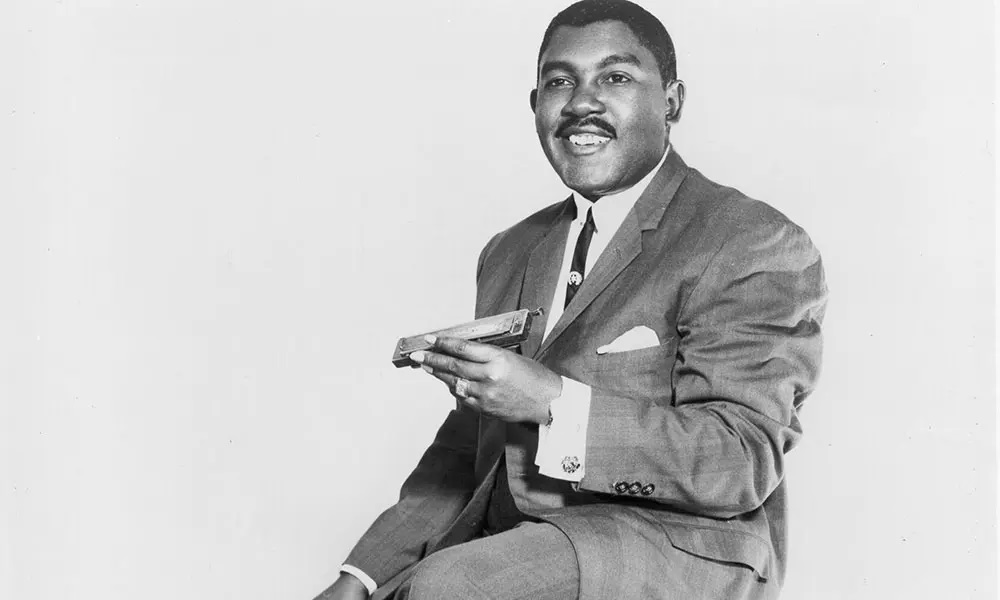Herman “Junior” Parker was one of the most influential blues singers of the 1950s and 1960s. Known for his warm, velvety voice and innovative musical style, Parker helped bridge the gap between traditional blues and the emerging sounds of rhythm and blues and soul. Though not as widely recognized as some of his contemporaries, his contributions to American music are profound and lasting.
Early Life and Musical Beginnings
Junior Parker was born on March 27, 1932, in Coahoma County, Mississippi. Raised in a region rich in blues tradition, he was surrounded by the sounds of artists like Sonny Boy Williamson and Howlin’ Wolf. From an early age, he was drawn to music, especially the harmonica and the guitar. As a teenager, he began performing in local juke joints and at community gatherings, where his natural charisma and unique vocal style quickly set him apart.
Rise to Fame
Parker’s big break came in the late 1940s and early 1950s when he joined the Beale Streeters, a Memphis-based collective that included future stars such as B.B. King, Bobby “Blue” Bland, and Johnny Ace. In 1952, Parker formed his own band, The Blue Flames, and caught the attention of the legendary producer Sam Phillips at Sun Records.
In 1953, Parker recorded “Feelin’ Good” at Sun Records, which became a regional hit and showcased his smooth vocal delivery and tight musical arrangements. The song’s success helped him secure a contract with Don Robey’s Duke Records, where he would spend much of his most successful career.
Signature Style and Classic Hits
What made Junior Parker stand out in the crowded blues scene was his voice—soft, melodic, and deeply expressive. While many blues artists of the time emphasized raw emotional power, Parker favored a more polished and rhythmic sound that leaned into soul and R&B. His ability to blend genres made his music accessible to a broad audience.
Throughout the 1950s and 1960s, Parker released a string of hits that cemented his legacy. Among his most well-known songs are:
- “Next Time You See Me” (1957) – A Billboard R&B hit that remains one of his most beloved recordings.
- “Driving Wheel” – A classic blues ballad that showcased his vocal control and emotional depth.
- “Stand by Me” – His blues-infused take on the Ben E. King classic.
- “In the Dark” – A slow-burning groove that emphasized his signature laid-back style.
Parker was also one of the first artists to cover “Mystery Train”, a song later made famous by Elvis Presley, who was heavily influenced by Parker’s version.
Influence and Legacy
Junior Parker’s influence stretches across blues, soul, and rock music. His smooth vocal delivery influenced a generation of singers, including Otis Redding and Al Green. His recordings helped shape the sound of modern soul and contributed to the evolution of R&B.
Though Parker never achieved the commercial fame of some of his peers, his work was widely respected within the industry. He toured extensively throughout the United States, performing with top acts and maintaining a devoted fanbase.
Final Years and Death
In the early 1970s, Parker continued to record and tour, experimenting with funk and soul influences. Unfortunately, his career was cut short when he died on November 18, 1971, at the age of 39, from a brain tumor. Despite his early passing, his music lives on, celebrated by blues enthusiasts and musicians alike.
Conclusion
Junior Parker was a bluesman with a golden voice—smooth, soulful, and unmistakably unique. His ability to infuse traditional blues with elements of R&B and soul made him a pioneer of modern music. Though he may not be a household name today, his influence is woven into the fabric of American music history, and his recordings remain a testament to his remarkable talent.


Comments are closed